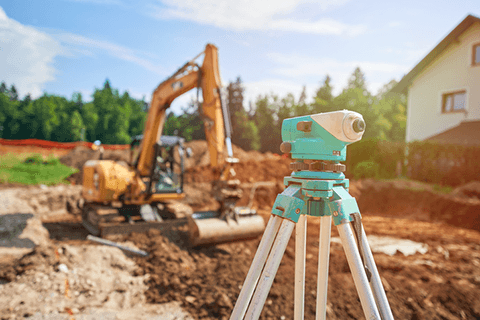
How much does a Phase II Environmental Site Assessment Cost?
If you need a Phase II Environmental Site Assessment (ESA), how much should you budget for this service? To properly estimate the price, it is important to first understand what affects the cost of a Phase II ESA.
The final total will vary based on several factors. Soil samples, monitoring wells, and reporting can differ greatly by site and project requirements. Additionally, which company you select to complete your Phase II also affects the cost. Following is a breakdown of these variables to clarify what you can expect for your ESA cost.
Soil Samples
A Phase II ESA typically includes an assessment of the subsurface soils. This requires obtaining soil samples, which are collected to determine contamination levels. The cost of this process depends largely in part on how many samples are collected as well as the amount, or type, of chemical analysis that will be run on each sample. It is important to note that a thorough Phase II ESA begins with representative sampling that is carefully planned in advance of on-site operations.
Monitoring Wells
Ground water monitoring wells are another assessment tool used for a Phase II ESA. Ground water wells are constructed through subsurface drilling – in most cases the environmental professional will plan to utilize soil boring locations for ground water well construction – after the soil samples are collected. Ground water monitoring is conducted to assess the ground water quality at the subject site, measure water levels and flow direction. Typically, five factors influence the cost of this monitoring.
- Well depth: Do the wells need to be 15 feet deep or 60 feet deep? Clearly, the deeper the well the more expensive for drilling and well construction.
- Surface structure: Subsurface composition largely determines the type of equipment used to drill. Soil boring through sand, silt, clay can be accomplished in a timely manner resulting in lower costs. Drilling through shallow bedrock or dense clay, however, requires advance technology such as air rotary drilling – an added cost to your project.
- Site access: Is the site easy or difficult to access? Are there structural or topographical challenges to overcome? Are there underground features such as old fill, utility right of ways, etc. that will require to be located? Different types of drill rigs and methods must be used depending on the terrain and location of the site.
- Area of Concern: If a large area must be assessed, a sufficient number of soil boring and monitoring wells may be required to representatively assess the underlying soils and ground water. The larger the area to be assessed, the greater the number of soil borings and ground water wells should be planned for a representative characterization of the subject site.
- Chemical Analysis: A large component of Phase II ESA project cost lies with chemical analysis required for the project. Both media – soil and ground water – are required to be analyzed by an accredited environmental laboratory. In the planning stages, the Environmental Professional should provide the Chemicals of Concern required for analysis for each sample – also including Quality Control samples and analysis.
Reporting
After receiving the laboratory analysis report, a written report will be prepared by the Environmental Professional. A Phase II ESA report will include an examination of all data collected including chemical analysis, subsurface soils/ground water conditions as screened during on site operations, etc. The report will provide an Opinion/Conclusion by the Environmental Professional as to the overall condition of the subsurface soils and ground water, delineate the area of concern, if detected, and compare pollutant concentrations to appropriate comparative contaminant levels.
Service Level
When considering the cost of a Phase II Environmental Site Assessment, it’s important to keep the old adage in mind: You get what you pay for. It is essential for the future success of your project to partner with a company that offers high quality and reliability. If you’re just looking for low cost, you won’t get the precision methods and detailed reporting you need to avoid future problems. Any savings you experience on the initial assessment can easily be surpassed by legal fees down the line.
Always choose a service that offers clear, complete and concise reports, extensive experience and familiarity with local sites and regulations. If you end up paying a little more for this expertise, it will be well worth it in the long term.
Why Choose ENVi Environmental for Your Phase II ESA?
Not all environmental firms are created equal. Choosing one based solely on the cost of your Phase II Environmental Site Assessment can expose your company to unnecessary risk.
With more than 30 years of experience, ENVi Environmental is equipped with a complete portfolio of services to meet the needs of complex projects. We offer an efficient, seamless approach from start to finish. Our clients enjoy full transparency, regular communications and complete reports. Your Phase II ESA report will offer detailed analysis and comparison to risk-based standards based on our comprehensive knowledge of the regulatory requirements. Our consistent, detailed methods result in a high approval rate for the projects we submit.
Minimize your environmental risk and maximize your investment by partnering with the professionals at ENVi Environmental. Contact our team today to find out more about our Phase II Environmental Site Assessments and how they can benefit your business.

